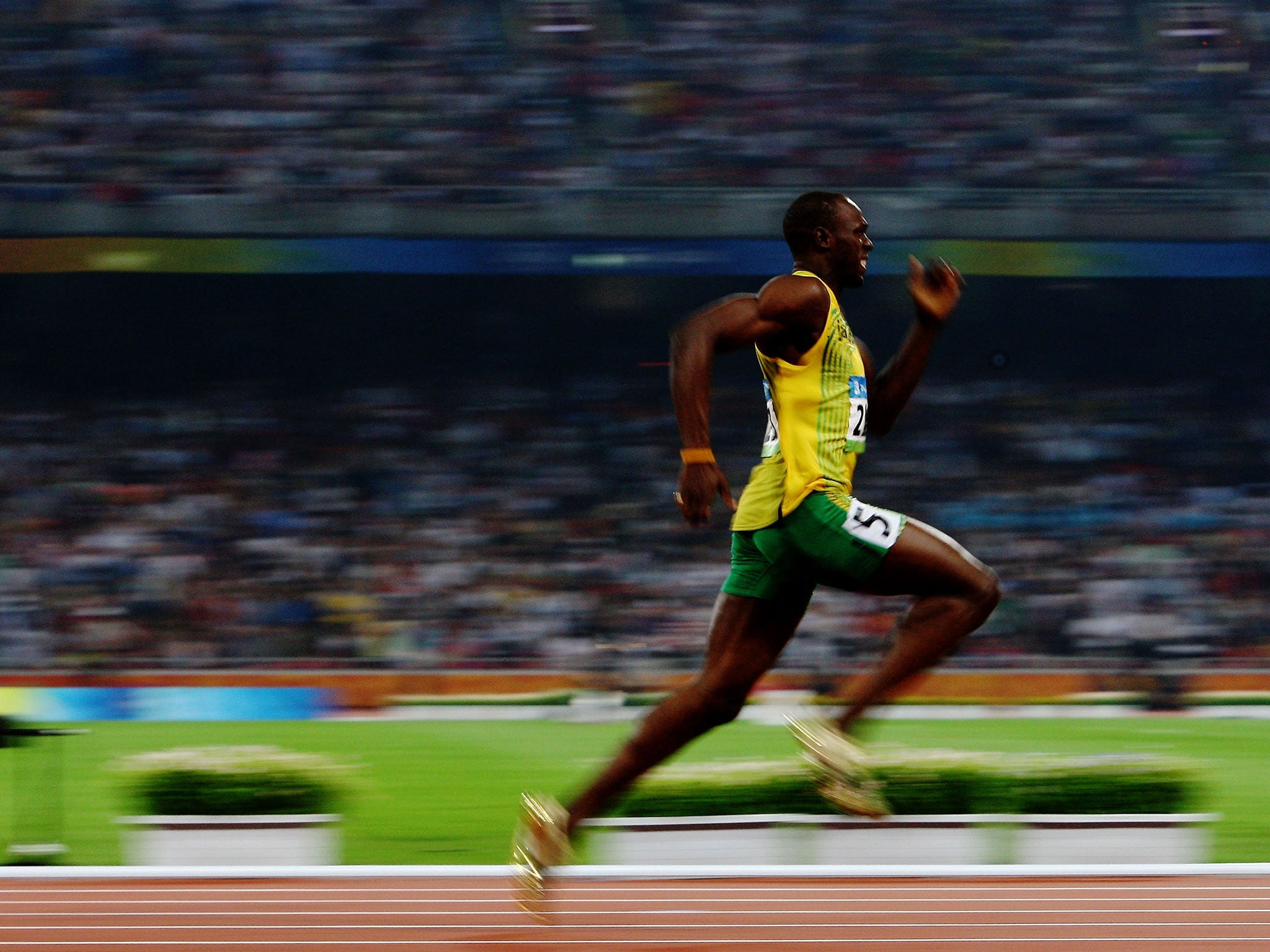Could symmetrical knees be the secret to Usain Bolt's success? A new study seems to think so
Jamaican children have particularly symmetric legs in comparison to Europeans, according to research

Your support helps us to tell the story
From reproductive rights to climate change to Big Tech, The Independent is on the ground when the story is developing. Whether it's investigating the financials of Elon Musk's pro-Trump PAC or producing our latest documentary, 'The A Word', which shines a light on the American women fighting for reproductive rights, we know how important it is to parse out the facts from the messaging.
At such a critical moment in US history, we need reporters on the ground. Your donation allows us to keep sending journalists to speak to both sides of the story.
The Independent is trusted by Americans across the entire political spectrum. And unlike many other quality news outlets, we choose not to lock Americans out of our reporting and analysis with paywalls. We believe quality journalism should be available to everyone, paid for by those who can afford it.
Your support makes all the difference.Symmetrical knees could help to explain why Jamaicans are so good at sprinting, according to a study into why such a small nation dominates international sprint events for both men and women.
Jamaican runners, epitomised by the 100m world record holder Usain Bolt, lead the world in sprinting and now scientists believe they can explain why with the help of a long-term research findings into the body symmetry of Jamaican children.
The researchers found that the most symmetrical children with the most symmetrical knees in the study were also the most likely in the group to become the best sprinters when they became adults, said Professor John Manning of Northumbria University in Newcastle.
“We found that Jamaican children have particularly symmetric legs, in comparison to Europeans. Furthermore, in children symmetry in the legs, particularly in the knees, predicted their willingness to sprint and their sprinting times when they were adults,” Professor Manning said.
The childhood symmetry project began in 1996 and involves about 300 primary school children from rural Jamaica, with an average age of eight when the study started. They were measured for body symmetry at the start of the project and have been followed up over the years with a series of further tests.
The researchers have returned to Jamaica to re-measure the children and to test such attributes as handedness, doll-cradling tendencies, aggression, religious convictions – and now sprinting speed. Of the 288 children who formed the original cohort, 163 volunteered to undertake sprinting tests in 2010 when they were in their early twenties.
“The purpose of the study was to consider small deviations in body symmetry called fluctuating asymmetry or FA. These are measured from about 10 pairs of traits such as knee width, ankle circumference, foot length, ear height, finger length etc,” Professor Manning said.
“Most people have small deviations from symmetry in each trait. Add these across many traits and you have the composite FA per individual,” he said.
Body symmetry is thought to be a sign of overall genetic fitness and good physical development. It has also been correlated with a wide range of attributes from running speed and physical attractiveness in both sexes, to sperm production in men, Professor Manning explained.
“With regard to sprinting, we found that participants with symmetric legs in 1996, particularly knees, tended to volunteer for the sprints and they tended to run the fastest when tested in 2010. Also, there was some evidence that these Jamaican children had substantially more symmetry in their legs than UK children,” he said.
“So we think our results inform the debate as to why Jamaicans tend to win gold medals in sprinting. I think this may, in part, explain Jamaican success in sprinting disciplines.
“However, to be sure we need to follow it up by looking at international level sprinters and adding some genetic tests. Also, more comparative data on Caucasians will help to further clarify the issue. We intend to look at some of the best Jamaican male and female athletes early in 2014,” he added.
The researchers, who included evolutionary biologist Robert Trivers of Rutgers University in New Brunswick, suggested in their research paper published in the on-line journal PlosOne that the strong West African ancestry of Jamaicans can help to explain their sprinting prowess.
“It does seem likely… that peoples of West African origin have been subject to strong natural selection for speed over short distances, and this has influenced a number of traits including developmental stability of the knees and of associated traits in the legs,” they said.
What makes Usain Bolt so good?
Usain Bolt does not have the physique of a typical sprinter. At 6ft 5in he is taller and leaner than many previous world record holders, such as American sprinter Carl Lewis, who was three inches shorter and a stone heavier than Bolt when he held the 100m world record in the 1980s.
However, Bolt’s height and leg length means he has a very long stride, which is an advantage in the middle stages of the race when he has reached his top speed – but he has to have the stamina to maintain that velocity until the finish line.
Jamaican athletes with West African ancestry also have significantly more “fast-twitch” muscle fibres than runners from other parts of the world. Fast-twitch fibres tire easily but are good for rapid muscle contraction over short distances – a critical attribute for sprinting.
Join our commenting forum
Join thought-provoking conversations, follow other Independent readers and see their replies
Comments